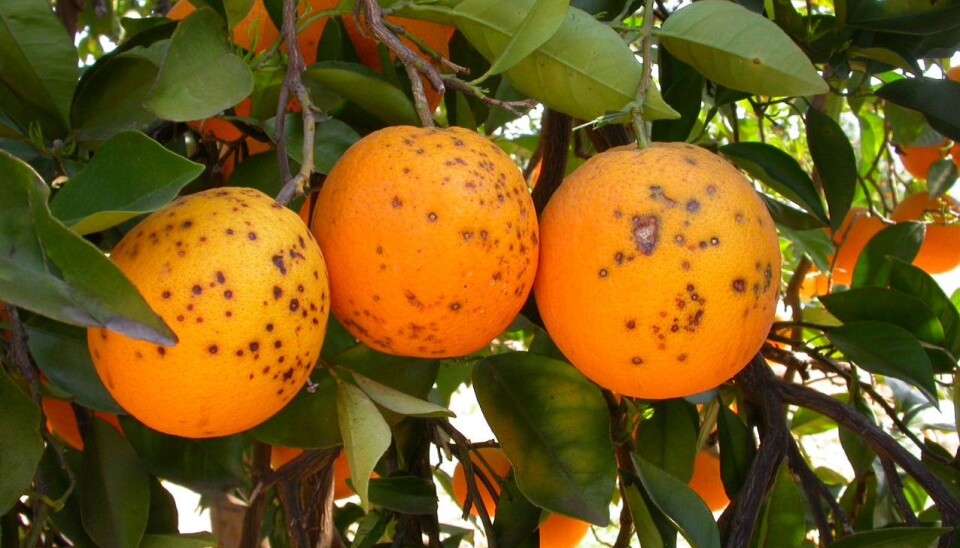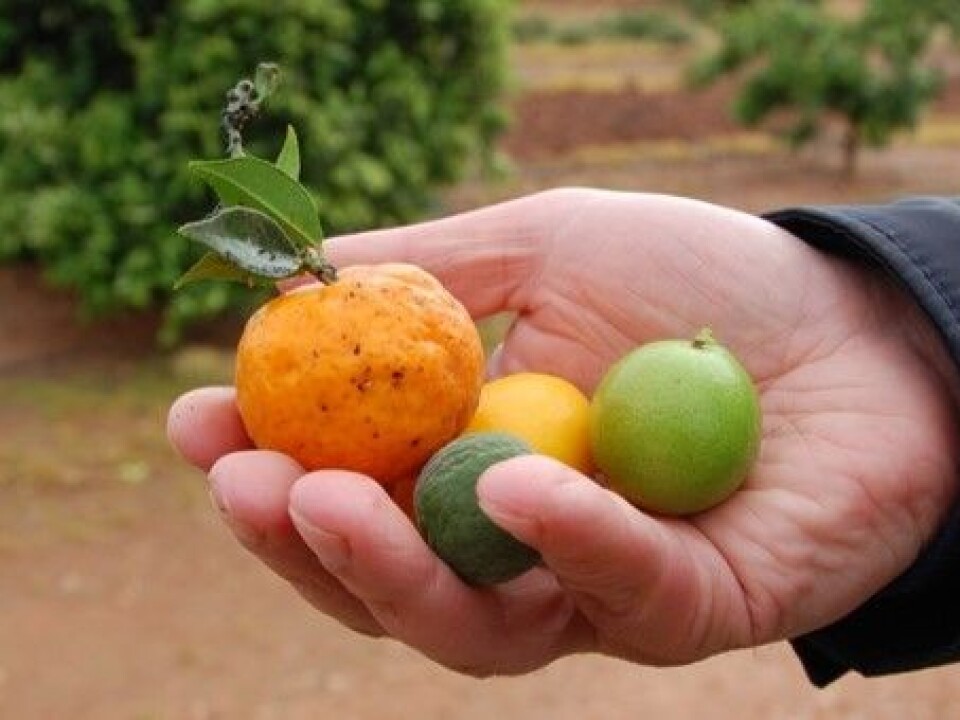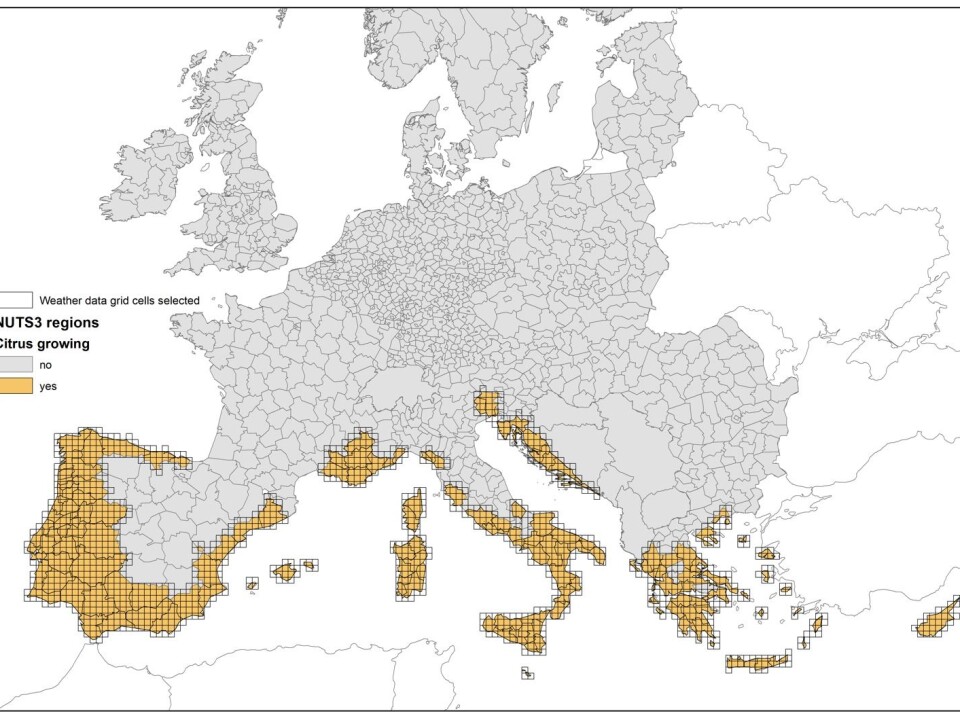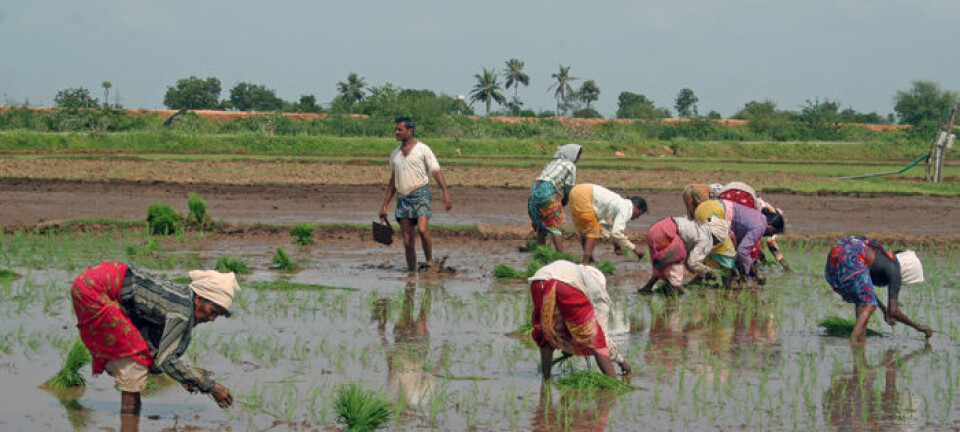This article was produced and financed by Norwegian Institute for Agricultural and Environmental Research

Norwegian to the rescue for Mediterranean oranges
Unpleasant fungus that could infect European citrus fruits is causing headaches in the EU. Now a Norwegian scientist has been brought in to help.
Denne artikkelen er over ti år gammel og kan inneholde utdatert informasjon.
A conflict is currently flaring up between the EU and the major citrus exporters outside of the European market.
The root of the conflict is an unwanted fungus called Citrus Black Spot (CBS), which is now deemed to be potentially so destructive to the European citrus industry that Brussels is considering tightening the current import regulations. This has led South Africa to put forward threats of bringing the case to the WTO.
No ties to the industry
In the midst of this conflict is the Norwegian scientist Trond Rafoss from Bioforsk – the Norwegian Institute for Agricultural and Environmental Research. As an independent researcher, he has been leading a European risk assessment on behalf of the European Food Safety Authority EFSA.
Rafoss recently presented the project results to the EU Plant Health Committee in Brussels. There were great expectations to the main conclusions of the report and the evaluation of the risks to citrus production in Europe.

"In general, the researcher's challenge is to make a balanced and independent assessment of risk. It may be an advantage to come from a country outside the EU, and from research activities with no ties to the citrus industry," says Rafoss.
Common utside Europe
CBS is caused by the fungus Phyllosticta citricarpa, which currently is not found in the EU. The fungus is, however, quite common in many citrus producing countries outside Europe, and could potentially be a stowaway along with citrus cargo during transit.
Infectious spores are spread both by air and rain and can affect all types of citrus fruits.
The fungus is not harmful to humans, although it still constitutes a significant problem for manufacturers in terms of deterioration of quality and loss of crops.
Suitable climate for infection

The researchers have created a list of possible measures and looked at the efficiency, technical feasibility and the degree of uncertainty attached to each individual measure.
“In addition to chairing the working group, my role in the working group has primarily been using mathematical models based on weather data to simulate the maturation of spores and infection conditions,” says Rafoss.
The researchers have compared 21 years of historical weather data from 1,518 citrus growing places along the Mediterranean Sea.
“In order to have a disease problem, there must be suitable weather conditions for disease outbreaks repeatedly over time, so that the epidemic can continue," Rafoss says.
"We have found that in many of these places, the weather conditions causing potential risk of infection have occurred in each growing season throughout these 21 years, while in others places it has been too dry for the fungus.”
But he stresses that there is a need for more knowledge on how the fungus behaves under different weather and climate conditions.
Provoked South Africa
South Africa exports 600,000 tonnes of citrus fruits to Europe each year, valued at one billion Euros. This represents a third of Europe's citrus imports.
The country has announced that it will consider bringing the case to the WTO’s Dispute Settlement Body, if any new infection control measures have consequences for the country's citrus industry. The WTO will then decide whether the risk assessment which the EU regulations are based on hold up.
“South Africa claims that citrus areas in the EU have climates that are either too dry or too cold for disease epidemics to develop,” says Rafoss.
Currently, the EU is open to imports from South Africa, but imports are subjected to a number of requirements. Amongst other things, exports must come from disease-free areas of the country. Moreover, the production site must not have been infected in the past year.
The EU is considering introducing stricter rules, as spot checks of imports have continued to detect infections in arriving imported fruit batches. In some seasons, imports have been stopped due to this.
Lime could be an exception
Nevertheless, some European countries still want to import citrus fruits from infected nations. In Brussels, the researchers were asked to assess whether it is possible to divide the EU into protected and unprotected zones.
“Theoretically this is possible, but our assessment shows that it would be difficult to implement in practice. This is partly due to the EU’s principles of free movement of goods, but primarily as a result of the size of the trading volume,” Rafoss says.
He explains that it would be demanding to follow up the labelling of each box, and establish the necessary monitoring regime that would prevent boxes of fruit from ending up in risk areas.
Tahitian lime
Whether there are grounds for making an exception for one particular type of lime is another consideration:
“Tahitian lime does not develop symptoms even though it is a host plant for the disease. Since it is believed that the infection from fruit can only occur through symptoms, there is a lower risk associated with the importation of lime," says Rafoss.
"Brazil has been very keen that this should be made an exception,” he adds.
Countries that export citrus fruits to the EU are now waiting in anticipation for what the political impact of the risk assessment will be. It is up to the EU’s Standing Committee on Plant Health to decide which preventive measures continue, and whether there will be a further tightening or loosening of the current regulations.
Translated by: Siri Elise Dybdal

































